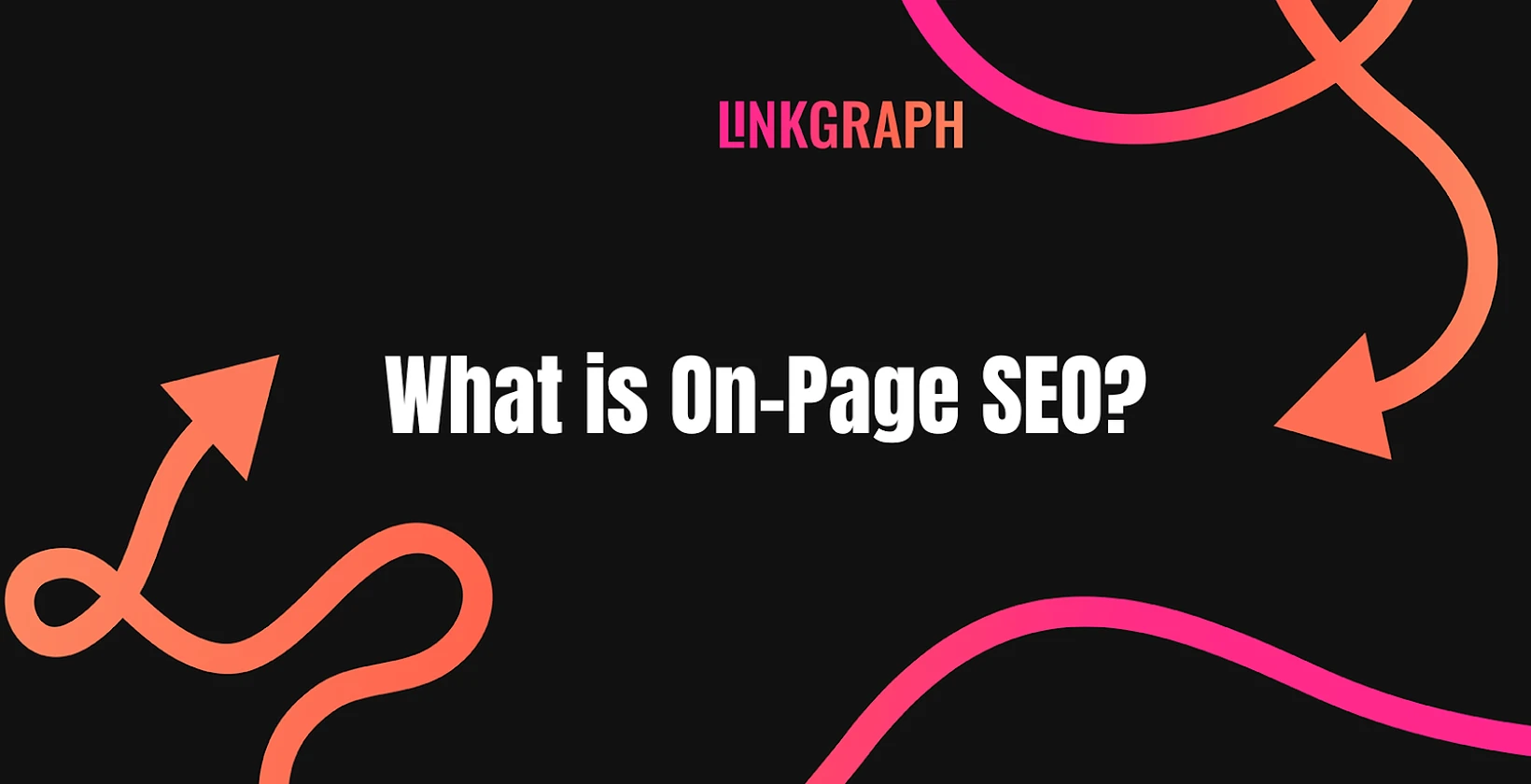13 Most Common Ecommerce SEO Mistakes to Avoid
Ecommerce SEO mistakes are common errors that prevent online stores from ranking well in search engines, reducing traffic, visibility, and conversions. Even well-designed ecommerce websites struggle when […]
Ecommerce SEO mistakes are common errors that prevent online stores from ranking well in search engines, reducing traffic, visibility, and conversions. Even well-designed ecommerce websites struggle when foundational SEO practices are overlooked or misapplied. These mistakes quietly drain performance until traffic stalls and revenue drops.
This article explores 13 common ecommerce SEO mistakes, starting with improper keyword research, keyword stuffing, duplicate content, poorly optimized product pages, and weak category SEO. Each of these issues disrupts discoverability and confuses both search engines and users, leading to lower rankings and lost sales opportunities.
The sections ahead explain how these mistakes happen, what impact they have, and what ecommerce businesses must do to fix them. With clear examples and actionable solutions, this guide offers a path to stronger rankings and long-term growth.
How do Ecommerce SEO Mistakes Affect Businesses?
Ecommerce SEO mistakes directly impact business ability to attract and retain customers through search engines. Ecommerce SEP mistakes reduce visibility because search engines lower the ranking of sites with poor optimization, causing search engines to hide products from potential buyers. Lower visibility means ecommerce SEO mistakes lead to decreased organic traffic, limiting the number of visitors exposed to the brand and reducing sales opportunities.
Ecommerce SEO mistakes also cause conversions to drop. Visitors who do find the site, face slow loading speeds, thin content, or irrelevant search matches, common results of ecommerce SEO mistakes, that drive them away before completing purchases. Additionally, ecommerce SEO mistakes waste resources by causing businesses to invest in content and development efforts that fail to produce meaningful results due to a lack of strategy or proper execution.
Brand reputation suffers when ecommerce SEO mistakes create broken links, poor navigation, or inconsistent messaging. These issues signal low professionalism and reduce customer trust. Moreover, ecommerce SEO mistakes widen the competitive gap as competitors with stronger SEO strategies capture more traffic and sales, leaving affected businesses behind.
Finally, ecommerce SEO mistakes increase bounce rates. Users encountering slow, confusing, or irrelevant pages leave quickly, signaling poor user experience to search engines. This feedback loop caused by ecommerce SEO mistakes further damages rankings and visibility, creating ongoing challenges for ecommerce growth.
Top 13 Ecommerce SEO Mistakes to Avoid
Ecommerce SEO mistakes silently erode performance across visibility, traffic, and revenue. Ecommerce SEO errors make it difficult for search engines to index and rank product or category pages, leaving valuable content buried in search results. Even with quality products and competitive pricing, stores suffer when foundational SEO issues go unresolved. Ecommerce SEO mistakes range from misused keywords and duplicate content to slow site speeds and broken links. Each issue compounds the next, creating friction in the user journey and missed ranking opportunities. Understanding these problems is the first step toward fixing them.
There are 13 ecommerce SEO mistakes to avoid. The 13 ecommerce SEO mistakes to avoid are listed below.
- Improper Keyword Research
- Keyword Stuffing and Unnatural Use
- Duplicate Content and Metadata
- Poor Product Page Optimization
- Weak Category Page SEO
- Poor Site Structure and Navigation
- Slow Page Loading Speeds
- Ignoring Mobile Optimization
- Missing or Incorrect Schema Markup
- Poor Image SEO
- Broken Links, 404s, and Legacy Redirects
- No Tracking or Analytics
- Ignoring User Experience (UX) Signals
We have broken down the 13 ecommerce SEO mistakes below.
1. Improper Keyword Research
Improper keyword research is one of the most critical ecommerce SEO mistakes. Improper keyword research happens when an online store targets keywords without analyzing search intent, search volume, competition, or relevance to product offerings. This leads to content that fails to match what potential buyers actually search, reducing site visibility in search results.
Improper keyword research affects ecommerce SEO by attracting unqualified traffic or no traffic at all. For example, targeting broad informational keywords like “best running shoes” instead of specific product-focused keywords like “men’s trail running shoes size 10” leads to high bounce rates and poor conversions. Search engines struggle to connect the site with transactional intent, which prevents product pages from ranking where it matters most.
To fix improper keyword research, ecommerce businesses must base their keyword strategy on intent-focused research. Start by identifying commercial and transactional queries tied to products or categories. Find keywords with high relevance and search volume. Group keywords by theme, match them to the correct stage of the buyer journey, and assign them to the most relevant pages. Aligning keyword targeting with real customer behavior improves organic visibility and drives qualified traffic that converts.
2. Keyword Stuffing and Unnatural Use
Keyword stuffing refers to the overuse of targeted keywords within webpage content, meta tags, or URLs in an attempt to manipulate search engine rankings. This ecommerce SEO mistake makes content sound forced, repetitive, and difficult to read. Search engines now penalize this outdated tactic, which reduces rankings instead of improving them.
Keyword stuffing damages ecommerce SEO by degrading the user experience and triggering algorithmic demotions. For example, a product page that repeatedly says “buy cheap wireless headphones online” in every sentence sounds robotic and lacks value. Search engines detect this over-optimization and push the page down in search results.
To fix keyword stuffing, ecommerce content must use natural language that aligns with user intent. Use keywords thoughtfully, place the main term in the page title, one header, and within the opening paragraph. Support the content with semantic variations, long-tail phrases, and relevant subtopics. Prioritize clarity, value, and readability over repetition. This approach improves rankings and provides a better shopping experience.
3. Duplicate Content and Metadata
Duplicate content and metadata occur when identical or near-identical text appears across multiple pages of an ecommerce website. Duplicate content and metadata includes repeating product descriptions, meta titles, and meta descriptions without differentiation. It confuses search engines about which page to index, reducing visibility and diluting ranking signals.
Duplicate content and metadata weakens ecommerce SEO by splitting link equity and lowering site authority. For example, a store selling similar shirts in various colors with identical descriptions across each product page forces search engines to choose one version to rank, or none at all. Duplicate metadata further harms click-through rates by displaying repetitive, unhelpful snippets in search results.
To fix duplicate content and metadata, start by creating unique product descriptions for each item, even if variations are minor. Update meta titles and descriptions to reflect individual features, benefits, or use cases. Use canonical tags to signal preferred pages and prevent internal duplication. For large catalogs, consider programmatically inserting unique attributes such as size, material, or color into metadata fields. These improvements help search engines understand page purpose and improve indexation, which strengthens visibility and rankings.
4. Poor Product Page Optimization
Poor product page optimization refers to incomplete, unstructured, or low-quality content on ecommerce product pages. Poor product page optimization includes missing keyword targets, weak descriptions, lack of internal linking, and absence of structured data. Search engines rely on well-optimized product pages to understand content, match it to user queries, and determine relevance.
Poor product page optimization weakens ecommerce SEO by limiting the ability of the page to rank for valuable search terms. For example, a product page that lists just a product name, price, and one image, without a detailed description, customer reviews, or supporting keywords, fails to satisfy search intent. As a result, search engines consider it low-value and reduce its ranking potential.
To fix poor product page optimization, ecommerce websites must add unique, keyword-rich product descriptions that highlight features, benefits, and common questions. High-quality images, customer reviews, and technical specifications strengthen content quality. Structured data markup (such as Product schema) helps search engines interpret the content accurately. These updates improve visibility, boost engagement, and drive higher conversion rates.
5. Weak Category Page SEO
Weak category page SEO happens when ecommerce category pages lack optimized content, clear structure, or proper keyword targeting. Weak category page SEO leads to pages that do not effectively guide search engines or users, reducing their potential to rank for relevant search queries.
Weak category page SEO hurts ecommerce SEO by limiting organic traffic and lowering overall site authority. For example, a category page listing “Men’s Shoes” with just a grid of product thumbnails and no unique content or targeted keywords misses opportunities to rank for important search terms like “best men’s running shoes” or “affordable men’s dress shoes.” Search engines view such pages as thin content, which decreases their ranking potential.
To fix weak category page SEO, ecommerce sites need to add unique, keyword-rich descriptions that introduce the category and explain its benefits or uses. Organize products with clear filters and navigation to improve user experience and crawlability. Implement internal linking to relevant subcategories and related products. Adding structured data and optimizing meta titles and descriptions further strengthens SEO. These changes help category pages attract more qualified traffic and improve overall search visibility of the site.
6. Poor Site Structure and Navigation
Poor site structure and navigation refer to ecommerce website layout that is confusing, disorganized, or difficult for both users and search engines to follow. Poor site structure and navigation occurs when important pages are buried too deep, links are inconsistent, or navigation menus are cluttered or unclear. Such a structure hinders smooth exploration and indexing.
Poor site structure and navigation damages ecommerce SEO by reducing crawl efficiency and user satisfaction. For example, if a shopper has to click through multiple unrelated pages to reach a product category, or if key pages are inaccessible from the homepage, search engines fail to index important content properly. This leads to lower rankings and higher bounce rates.
To fix poor site structure and navigation, ecommerce sites must create a clear, logical hierarchy that organizes products and categories intuitively. Use simple menus, breadcrumb trails, and internal linking to guide both users and search engines. Keep important pages within a few clicks from the homepage. Implement a sitemap and ensure URL structures are clean and descriptive. These improvements enhance crawlability, user experience, and ultimately boost search rankings and conversions.
7. Slow Page Loading Speeds
Slow page loading speeds occur when ecommerce website pages take too long to display content fully. Slow page loading speeds results from unoptimized images, heavy scripts, poor hosting, or inefficient coding. Slow pages frustrate users and hinder search engines from efficiently crawling the site.
Slow page loading speeds harms ecommerce SEO by increasing bounce rates and reducing user engagement. For example, a product page that takes more than five seconds to load, causes shoppers to leave before viewing details or making a purchase. Search engines detect slow loading times and rank these pages lower, as speed is a key ranking factor.
To fix slow page loading speeds, ecommerce websites must optimize images by compressing them without reducing quality. Minimize the use of heavy scripts and unnecessary plugins. Choose reliable hosting services and implement caching techniques. Regularly audit site performance using tools like Google PageSpeed Insights. These steps improve load times, enhance user experience, and increase the likelihood of higher search rankings.
8. Ignoring Mobile Optimization
Ignoring mobile optimization happens when an ecommerce website fails to deliver a smooth, responsive experience across mobile devices. Ignoring mobile optimization results in layouts that break on smaller screens, buttons that are hard to tap, and pages that load slowly or display incorrectly on smartphones. Since most shopping now starts on mobile, this oversight limits both usability and search performance.
Ignoring mobile optimization affects ecommerce SEO by reducing rankings on mobile-first indexing, a system Google uses to prioritize mobile versions of content. For example, a store with a desktop-only design will appear poorly formatted on phones, driving users away. Search engines detect these issues and lower site visibility in mobile search results.
To fix ignoring mobile optimization, ecommerce websites must use responsive design that adjusts layouts for different screen sizes. Font sizes, images, and buttons must scale appropriately and remain easy to interact with. Test mobile usability with Google Mobile-Friendly Test and address any loading or layout issues. A fully optimized mobile experience improves user satisfaction, supports conversions, and strengthens SEO performance across all devices.
9. Missing or Incorrect Schema Markup
Missing or incorrect schema markup refers to the failure to use structured data that communicates key product information to search engines. Missing or incorrect schema markup causes search engines to overlook important page elements like price, availability, or customer reviews, which reduces the chance of a page appearing in rich results.
Missing or incorrect schema markup weakens ecommerce SEO by lowering visibility in search features that improve click-through rates. For instance, a product page without properly applied Product schema fails to display review stars or pricing details, while competitor listings with schema appear more informative and appealing in search results.
To fix missing or incorrect schema markup, ecommerce websites must apply structured data that clearly defines product attributes, including name, description, image, price, availability, and ratings. The schema must follow established guidelines and be free from syntax errors. Using tools like Google Rich Results Test helps validate the markup. Accurate schema improves how search engines interpret ecommerce content and increases the likelihood of enhanced listings that attract qualified traffic.
10. Poor Image SEO
Poor image SEO occurs when product images are not optimized for search engines or user accessibility. Poor image SEO includes using large, slow-loading images, missing alt text, vague file names, or images not indexed by search engines. Images that lack optimization fail to support visibility and user engagement.
Poor image SEO affects ecommerce SEO by slowing page speed and missing out on image search traffic. For example, a product image labeled “IMG1234.jpg” without alt text or compression won’t rank in image search results and delays page loading. These factors reduce both usability and discoverability.
To fix poor image SEO, ecommerce websites must use descriptive file names like “leather-backpack-brown.jpg” and add relevant alt text that explains the product. Compress images to reduce load times without sacrificing quality. Use responsive image formats like WebP and include image sitemaps so search engines index them properly. Optimized images improve page speed, enhance user experience, and increase the likelihood of ranking in both regular and image search results.
11. Broken Links, 404s, and Legacy Redirects
Broken links, 404 errors, and legacy redirects occur when pages are deleted, moved, or redirected improperly without updating internal or external links. Broken links, 404 errors, and legacy redirects disrupts the user journey and prevents search engines from properly crawling the site, leading to lost traffic and reduced visibility.
Broken links, 404 errors, and legacy redirects harms ecommerce SEO by creating dead ends and wasting crawl budget. For example, a product page linked from a blog post might return a 404 error if the URL changes and no redirect exists. Search engines treat broken links as a sign of poor site maintenance, which lower rankings.
To fix broken links, 404 errors, and legacy redirects, ecommerce websites must conduct regular audits to identify broken links and outdated redirects. Replace or update internal links to point to active, relevant pages. Set up proper 301 redirects for removed or renamed URLs to preserve link equity. Use SEO tools to monitor crawl errors and ensure a seamless navigation experience. Clean link structures support both user engagement and consistent search engine indexing.
12. No Tracking or Analytics
No tracking or analytics refers to the failure to implement tools that monitor traffic, user behavior, and conversions. No tracking or analytics limits visibility into what works and what underperforms, making it difficult to refine strategies or measure return on investment.
No tracking or analytics weakens ecommerce SEO by preventing data-driven decisions. For example, a product page receive consistent traffic but fail to convert. Without analytics, the reason remains unknown, whether it’s poor UX, irrelevant traffic, or keyword mismatch. SEO strategies stagnate without insight into how users engage with content.
To fix no tracking or analytics, ecommerce websites must integrate platforms like Google Analytics and Google Search Console. Set up tracking for events such as product clicks, form submissions, and purchases. Monitor SEO-specific metrics like organic traffic, bounce rate, session duration, and conversion paths. Use this data to identify underperforming pages, optimize user journeys, and improve rankings. Analytics make ecommerce SEO measurable, actionable, and aligned with business outcomes.
13. Ignoring User Experience (UX) Signals
Ignoring user experience (UX) signals involves neglecting elements that affect how visitors interact with an ecommerce website. Ignoring UX signals includes cluttered layouts, confusing navigation, intrusive popups, and slow interactions, factors that discourage engagement and trigger early exits.
Ignoring UX signals reduces ecommerce SEO performance by signaling low quality to search engines. For example, a site with high bounce rates and low time-on-page ranks lower, even if its content is optimized. Poor UX disrupts the customer journey and weakens trust, which leads to fewer conversions.
To fix ignorance of UX signals, ecommerce websites must streamline site design and navigation. Use clear menus, fast-loading pages, mobile-friendly layouts, and minimal distractions. Test how visitors interact with key pages and remove barriers to purchase. Improve page speed, make CTAs prominent, and ensure content loads smoothly across all devices. Prioritizing UX creates a seamless shopping experience that satisfies users and strengthens SEO signals.
How to Fix These Ecommerce SEO Mistakes and Drive Sustainable Growth
Fixing ecommerce SEO mistakes begins with recognizing how each error impacts search performance, traffic, and conversions. From improper keyword research to broken links and weak UX, these missteps prevent search engines from properly indexing content and stop users from completing their journey. A comprehensive SEO strategy requires regular audits, technical updates, and content improvements to maintain search visibility.
Start by identifying problem areas through analytics, crawl reports, and content evaluations. Rebuild site architecture to support navigation, improve mobile experience, and ensure all content aligns with search intent. Update metadata, resolve duplicate content, and use schema markup to help search engines better understand product pages. Clean up redirects, fix broken links, and optimize images to support faster load times and higher engagement.
For ecommerce brands that want long-term SEO growth, consistency is key. That includes continuous monitoring, staying current with algorithm updates, and using reliable data to shape strategy. LinkGraph managed SEO services support this process with expert audits, technical fixes, keyword targeting, and performance tracking. With the right support in place, ecommerce websites recover from past mistakes and build sustainable rankings that drive real business growth.







